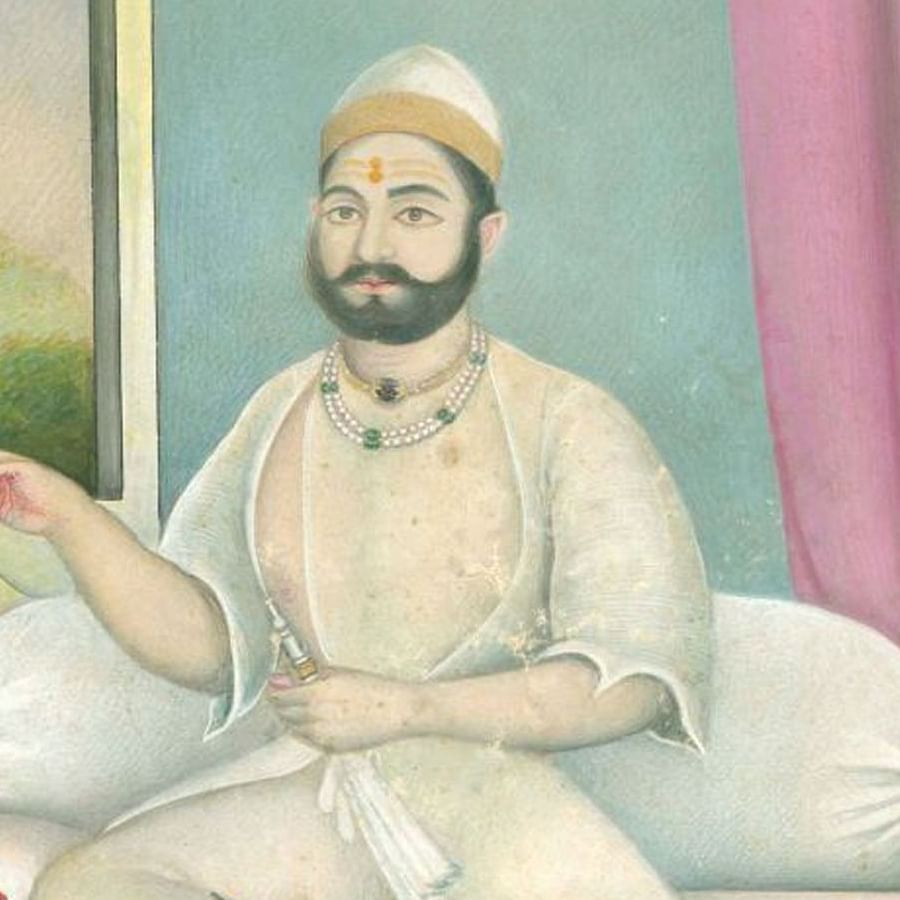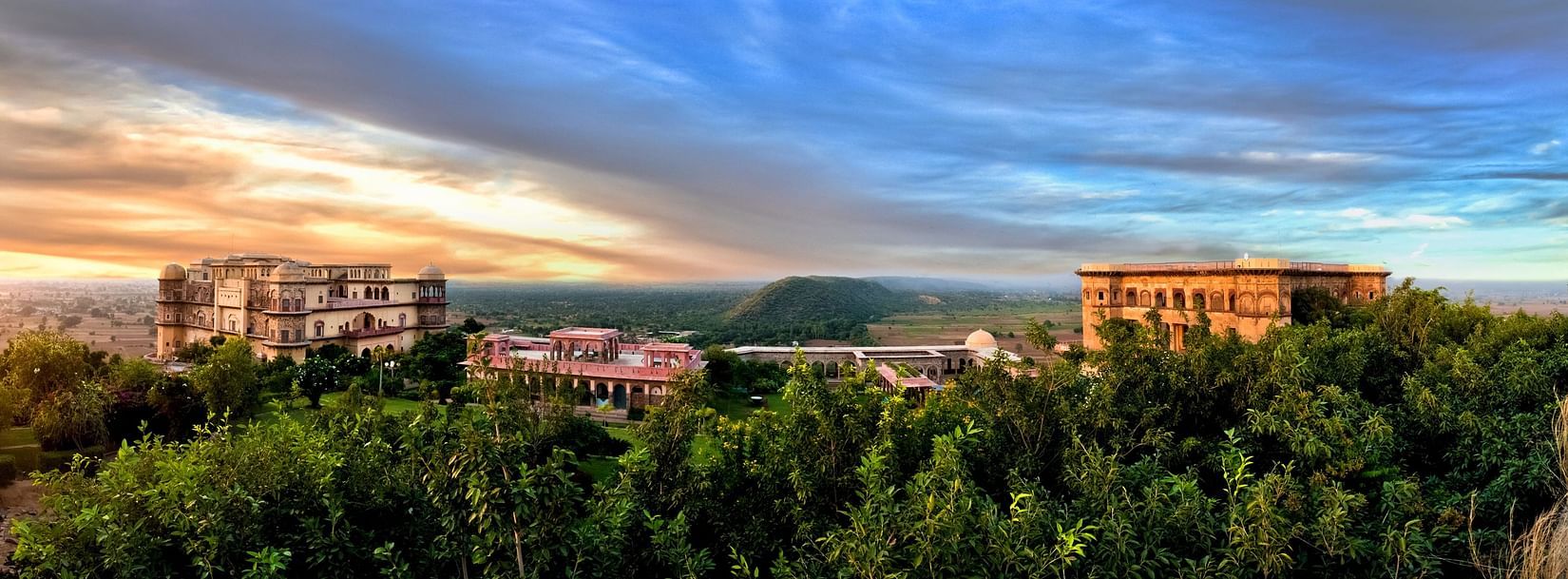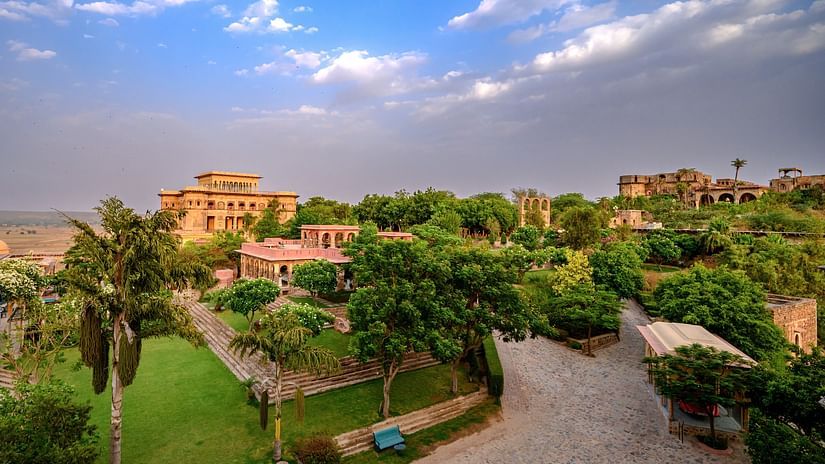Alwar, Rajasthan
The princely state of Alwar was founded by Rao Raja Pratap Singh at Machedi in the year 1775 CE. He died in 1790 CE. His adopted son Rao Raja Bakhtawar Singh ascended the throne of Alwar in 1790 at the age of 15. He died in 1814 CE.
This prince, during one of his rural campaigns, happened to see a village girl with whom he was totally infatuated with and took her to his palace in a 'dola', or a palanquin. She became the Maharaja's favourite mistress and was known as 'Moosi Rani'. In 1808 CE, she gave birth to a son named Balwant Singh and a girl named Chand Bai. It was her wish that her offspring should be married into pure Rajput families. Accordingly, Balwant Singh was married to a daughter of the Chauhan Thakur of Kishanpur near Silisedh lake and Chand Bai was married to Chauhan Thakur of Tatarpur.
Even though she was only a mistress, Rani Mossi committed Sati at the death of the Maharaja, and thereby posthumously earned the title of Maharani. Her son too earned the title of ‘Maharaja’. Therefore after Bakhtawar Singh, the territory of Alwar state was divided into two parts. Two-third of the territory with its capital at Alwar city was awarded to his nephew Maharaja Viney Singh, and the remaining one-third of the territory consisting of the Parganas of Tijara, Kishangarh, Mandhan, Karnikot and Mundawar – with its capital at Tijara – was awarded to Maharaja Balwant Singh. The jagirs of Tijara and Alwar had been given to Alawal Khan, a Khanzada, by Bahlol Lodi of Delhi. The Khanzadas had converted to Islam during Firuz Shah Tughlaq's reign in the 14th century.
Alawal Khan was succeeded by his son Hasan Khan Mewati, who had sided with Ibraham Lodi and Rana Sanga – who were vanquished in their battles against Babar, the founder of Mughal dynasty. This was in the years 1525 CE and 1527 CE respectively.

In 1835 CE Balwant Singh started the construction of a Fort-Palace after the name of his mother Moosi Maharani, as well as a grand Hawa Mahal. Famous architects and masons from Kabul and Mughal Delhi were originally engaged for its construction. Because of Maharaja Balwant Singh's premature death in 1845 CE – probably from murder, the construction remained incomplete until it was taken over by Neemrana Hotels to restore, complete and run as a palace hotel in Rajasthan.
Maharaja Balwant Singh was a very kind-hearted and benevolent ruler. He was very popular among his citizens. There were famous artists and poets in his court. Before starting the Fort-Palace complex on the hills, he has laid out gardens and constructed a beautiful palace for himself. He was a lover of elephants and horses. In the absence of a road, the large double pillars of the Rani Mahal and the Mardana Mahal could only have been carried uphill by elephants. Legend has it that his most favourite elephant and a pet parrot did not accept any food or water at the death of Maharaja and died in mourning.

The Tijara Fort-Palace complex is an unfinished marvel of three structures, built in the Rajput-Afghan style with early colonial influences: the Mardana for the royal men, the Rani Mahal for the maharanis and a pleasure palace on the edge of a plateau, overlooking a water body called the Hawa Mahal, palace of winds.
Maharaja Balwant Singh, born from a ‘low born’ mistress, was an illegitimate but flamboyant and charismatic prince. The British encouraged the division of Alwar to strengthen their hold. Their control over much of Rajputana had already been established with a Treaty of Offensive and Defensive Alliance which had been signed in 1818 CE. Consequently, Alwar State was divided between the two step brothers and Balwant Singh set out with one-third of its treasury to create a new architectural wonder at Tijara.
Even today, the countryside of Tijara is strewn with important stately cenotaphs resembling those of the Lodi Tombs at Delhi, as well as the samadhi of Emperor Hem Chandra Vikramaditya who was the last Hindu ruler at Delhi, ruling briefly from 1501 to 1506. It is after him that the Indian calendar of Vikram Samvat is named which is 57 years ahead of the year we use.
All the wealth, weapons and assets at Tijara were transferred back to the Alwar State after the death of Balwant Singh. His famous 'Indra Viman' chariot, which used to be drawn by four elephants during the Maharaja's procession, is now being used during the fair of Jagdishji at Alwar and is drawn by a tractor rather than elephants !

In January of 2016, Tijara opened its doors to the world with its recently-terraced hanging gardens and some of its tall ramparts raised. The Rani Mahal consists of 22 suites and rooms named after India's leading lady painters who have honoured them with their work. The Mardana Mahal houses 56 rooms, Deewar Mahal & Top Mahal houses 8 rooms and Khajoor Mahal houses 15 rooms, that have been styled by leading male designers, artists, and aesthetes.

The Marigold bar is a central structure where guests arrive from all directions for their drinks. One of the sunken wonders of the Tijara property is Pataal Kund – a rather large pool, where guests can swim in the comfort of summer shade.
There is also an underground auditorium below the fountain garden. No amount of photographs are able to describe the breathtaking 360 degree views of Tijara Fort-Palace which change with the light and the seasons.

